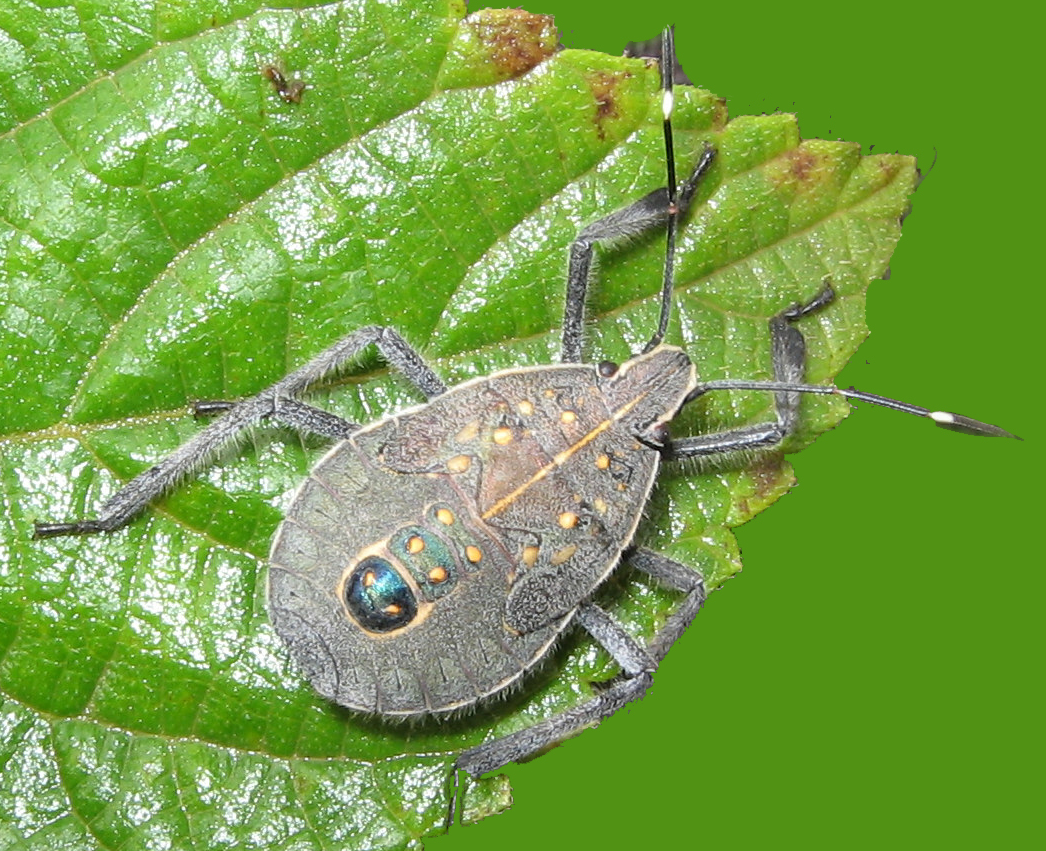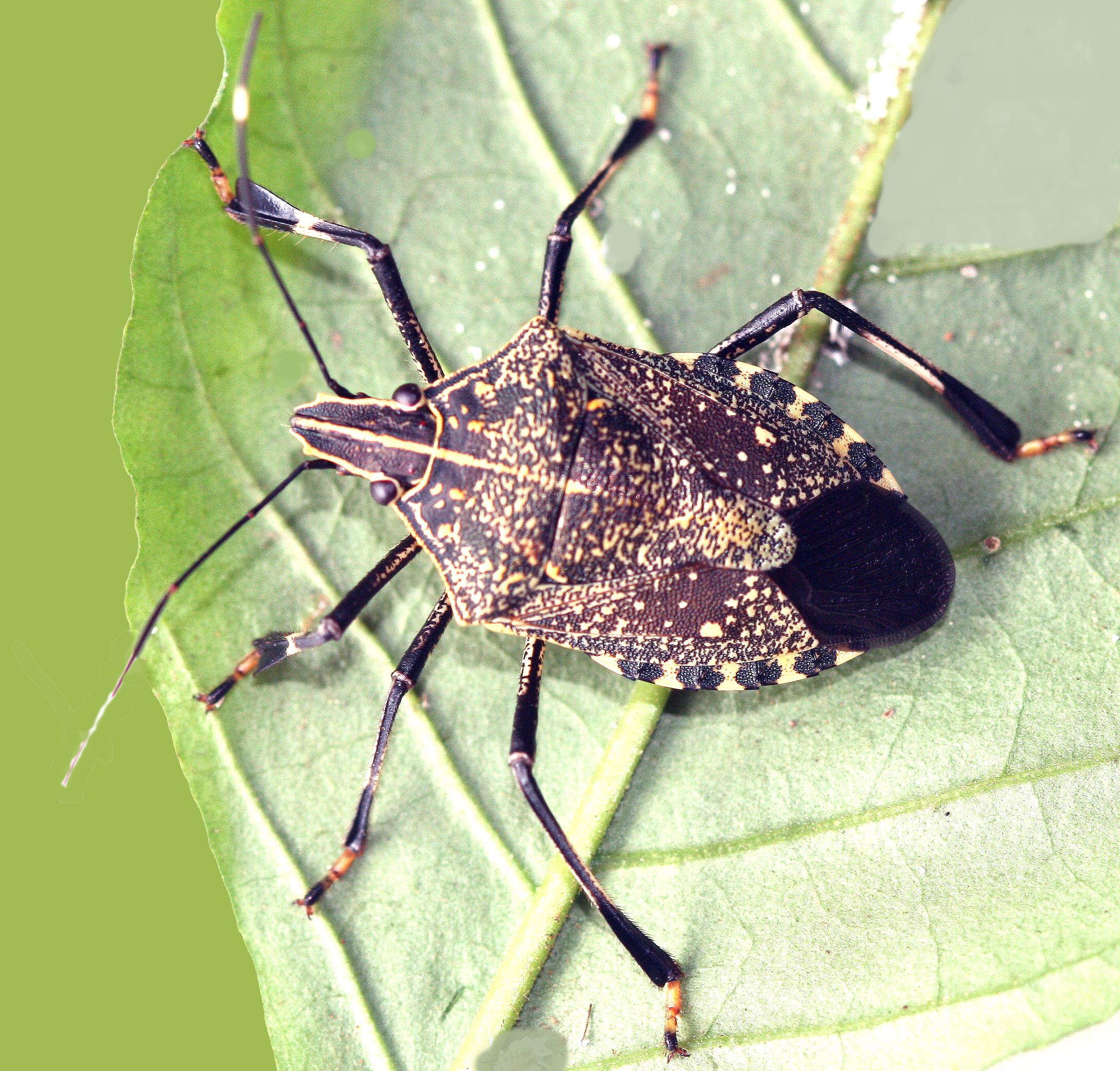 |
|
|
Erthesina acuminata. Photo taken
August 2009,
|
Erthesina Spinola, 1837 Erthesina Spinola, 1837: 290, 291-293. Type Species: Cimex mucoreus Fabricius, 1794 (= Cimex fullo Thunberg, 1783), by monoytpy. Included Species: acuminata Dallas, 1851
|
||
| Comments: There are a number of species described in this genus. I have examined quite a few specimens, and I now believe that there are probably only two species. Distant (1889) and Schouteden (1902) each described a species (africana and distanti, respectively) from Africa, but these most likely belong in Atelocerus or Pseudatelus, African genera that have an overall appearance similar to Erthesina. I have not seen any specimens of any Erthesina species from Africa, and at least Distant’s description could apply to several African species from the above genera. There appears to be an Oriental species and an Indian species. The overall appearance is very similar in all specimens examined, but there is distinct differences in the male genitalia from each region. The parameres are rather complicated, but in the Oriental species, the anteromesial lobe (next to the proctiger) is elongate and spine-like, the superior ridge is prolonged posteriorly, the two lobes rather widely separated, opposing the spine-like lobes of the parameres. Also, the outline of the inferior ridge is more U-shaped. The Indian species has the anteromesial parameral lobe short, truncate, rather robust, still coming into contact with the lobes of the superior ridge, but now these lobes are not as widely spaced. The inferior ridge tends to be more V-shaped. I have not found a convenient method for separating females other than locality and association with males. I can also divide the Indian species into two groups based on pilosity. In one group, the hairs on the abdomen, and especially on the thoracic sterna tend to be more numerous and longer; these specimens tend to be more brown in color. The other group has much fewer and shorter hairs, and tends to be more blackish in coloration. I have not been able to find any structural differences, and the male genitalia appears to be identical between the two. There does seem to be a possible seasonal correlation - nearly all of the "hairy" specimens were collected in January and February, with a few as early as October, while nearly all of the "non-hairy" specimens were collected between May and September, with a few from October and November. Others have placed some importance on the degree of dilation of the fore and hind tibiae. This appears to be quite variable, the variation not correlating at all with any other differences. I don’t at this time feel that this dilation can be used to delineate species. So, what names should be used. The oldest
name in the genus is fullo (Thunberg, 1783), the type locality being
J The oldest name from the Indian subcontinent is acuminata Dallas, 1851. I have examined male specimens from throughout India and Pakistan. I have seen one female specimen from Nepal, but do not know from which species it should be referred. Distant (1902, 1918) described aberrans and robertsi, respectively, from north India, based primarily on differences in the tibial dilations. These are probably both synonyms of acuminata. So, at this time, I am identifying all specimens from the Oriental region as Erthesina fullo (Thunberg), and all specimens from the Indian subcontinent as Erthesina acuminata Dallas.
|
|||

Late instar of Erthesina acuminata. Photo taken
8 August 2009,
|
|||
|
|
|||
David A. Rider
Professor of Entomology
North Dakota State University
E-Mail: David.Rider@ndsu.edu
Published by the
Department of
Entomology
Prospective students may schedule a visit by calling 1-800-488-NDSU.
